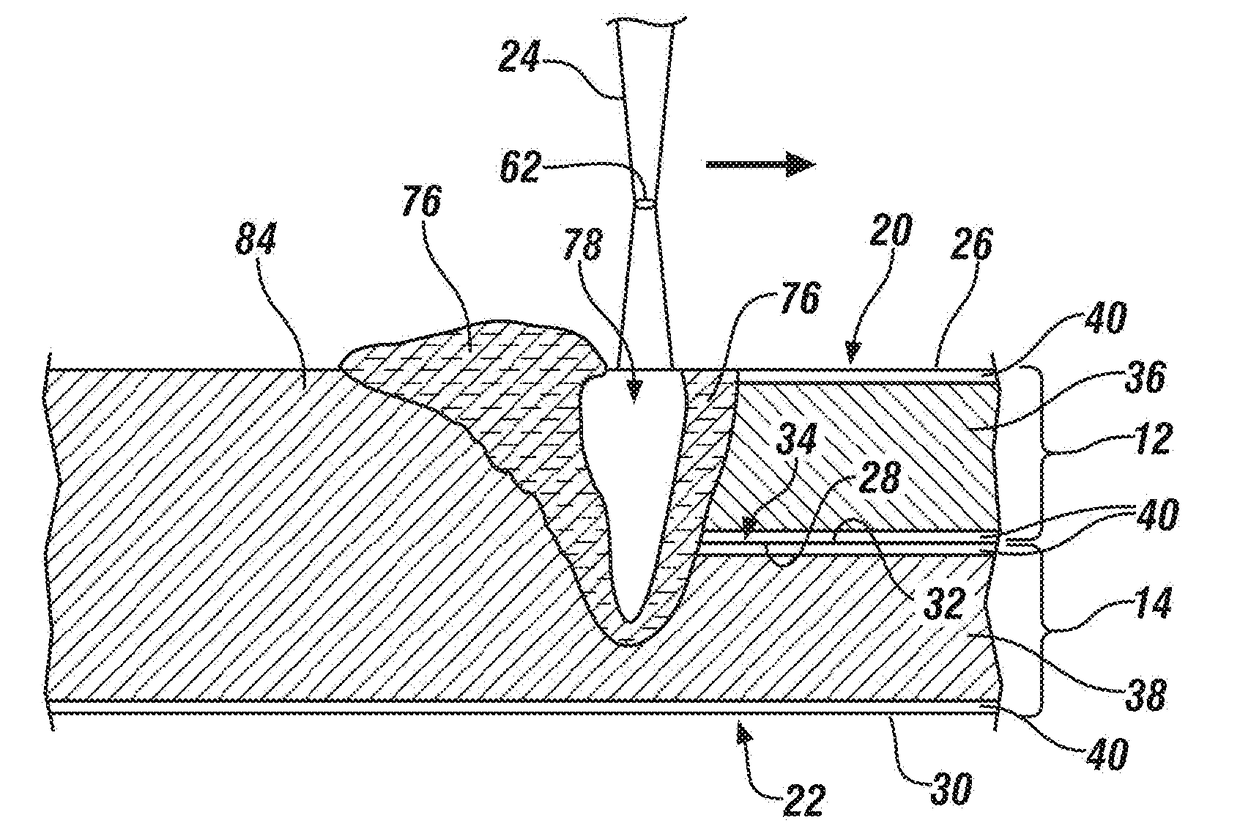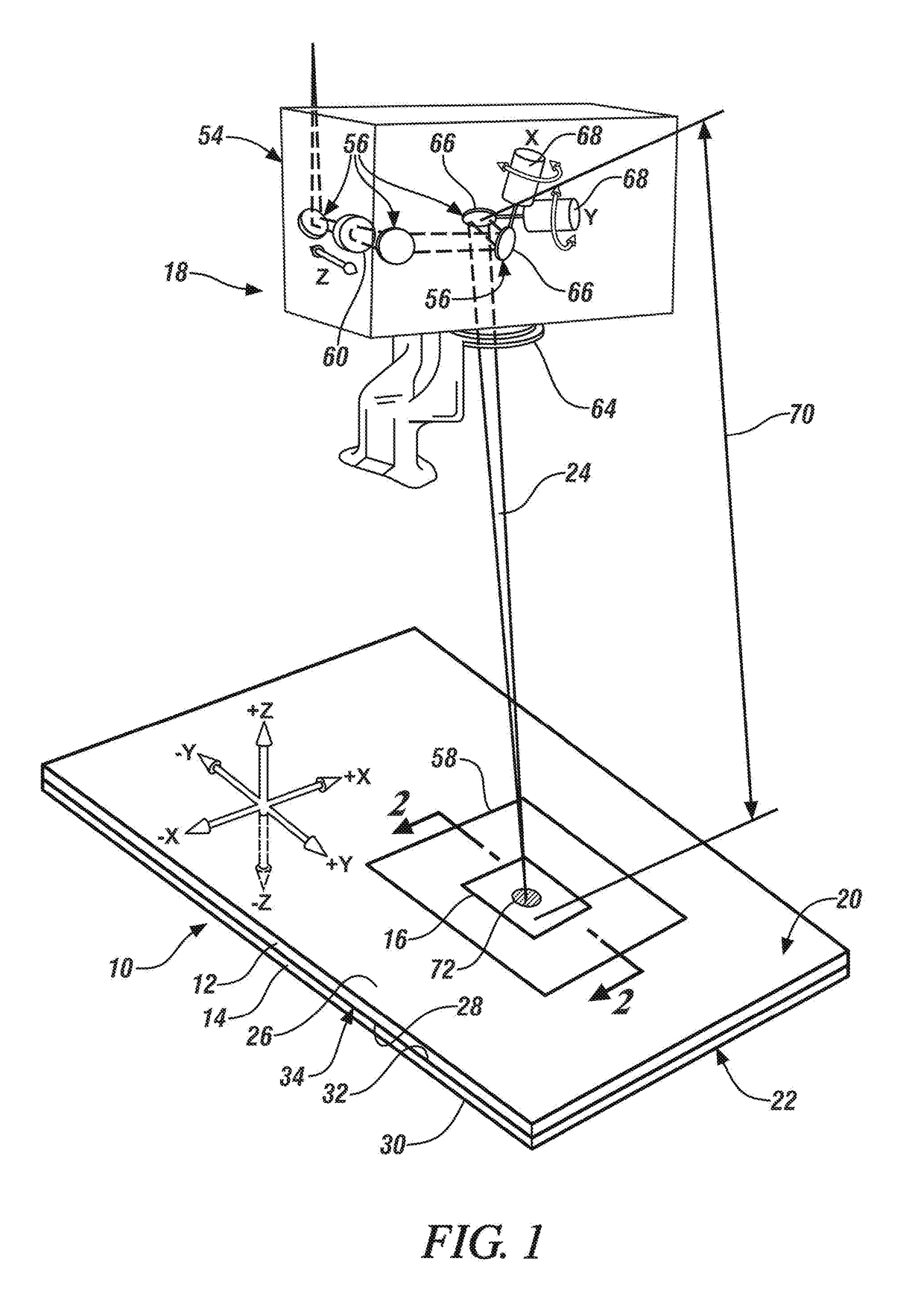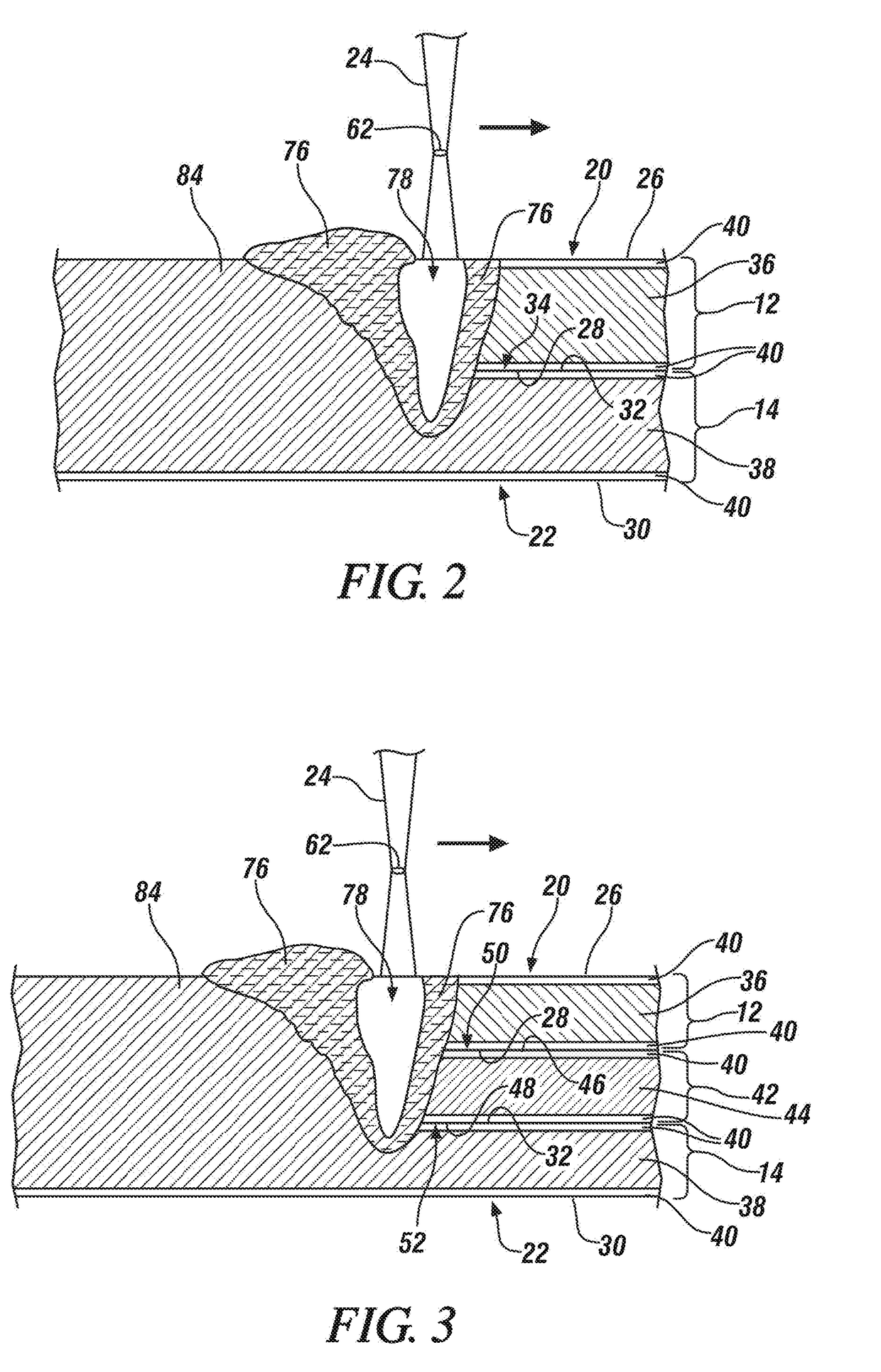Laser spot welding of overlapping aluminum workpieces
a technology of aluminum workpieces and laser welding, which is applied in the field of laser welding, can solve the problems of difficult autogenous fusion welding of aluminum workpieces, difficult to break apart and disperse coatings, and the use of laser welding to join together aluminum workpieces, etc., to achieve satisfactory strength, promote greater disturbance, and promote the effect of smoother transition
- Summary
- Abstract
- Description
- Claims
- Application Information
AI Technical Summary
Benefits of technology
Problems solved by technology
Method used
Image
Examples
Embodiment Construction
[0027]The disclosed method of laser welding a workpiece stack-up comprised of two or more overlapping aluminum workpieces calls for advancing a laser beam relative to a plane of a top surface of the workpiece stack-up along a spot weld travel pattern. The disclosed spot weld travel pattern includes one or more nonlinear inner weld paths surrounded by a peripheral outer weld path. Any type of laser welding apparatus, including remote and conventional laser welding apparatuses, may be employed to advance the laser beam relative to the top surface of the workpiece stack-up. The laser beam may be a solid-state laser beam or a gas laser beam depending on the characteristics of the aluminum workpieces being joined and the laser welding apparatus being used. Some notable solid-state lasers that may be used are a fiber laser, a disk laser, and a Nd:YAG laser, and a notable gas laser that may be used is a CO2 laser, although other types of lasers may certainly be used so long as they are abl...
PUM
| Property | Measurement | Unit |
|---|---|---|
| focal length | aaaaa | aaaaa |
| focal length | aaaaa | aaaaa |
| boiling point | aaaaa | aaaaa |
Abstract
Description
Claims
Application Information
 Login to View More
Login to View More - R&D
- Intellectual Property
- Life Sciences
- Materials
- Tech Scout
- Unparalleled Data Quality
- Higher Quality Content
- 60% Fewer Hallucinations
Browse by: Latest US Patents, China's latest patents, Technical Efficacy Thesaurus, Application Domain, Technology Topic, Popular Technical Reports.
© 2025 PatSnap. All rights reserved.Legal|Privacy policy|Modern Slavery Act Transparency Statement|Sitemap|About US| Contact US: help@patsnap.com



